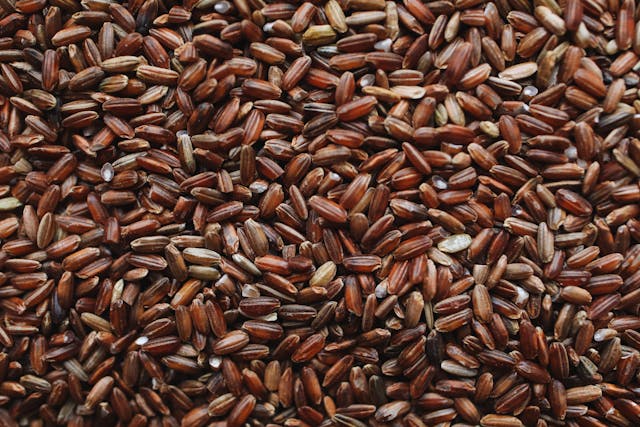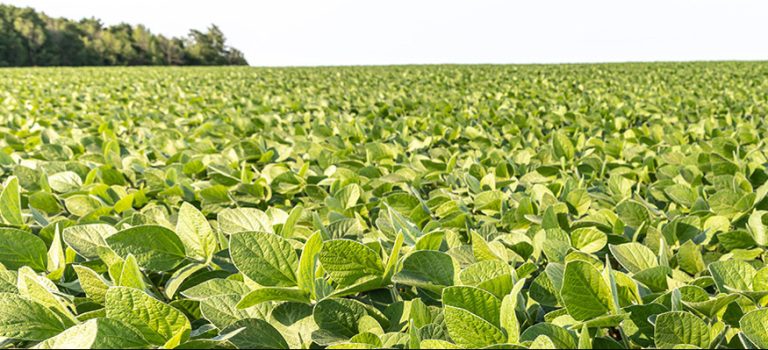Organic brown rice is whole grain rice with the inedible outer hull removed, but unlike white rice, the bran layer and germ are left intact, giving it its brown color and higher nutritional value. This layer is rich in essential nutrients, including fiber, vitamins, and minerals, making brown rice a healthier option compared to its more processed counterpart, white rice.

Historical Discovery of Brown Rice
The cultivation of rice dates back thousands of years, with its origins rooted in the ancient civilizations of Asia. Brown rice has a long and storied history that traces back to ancient civilizations. The cultivation of rice began thousands of years ago, with archaeological evidence suggesting that rice farming started around 8,000 to 9,000 years ago in the Yangtze River valley of China. Over time, rice cultivation spread throughout Asia, becoming a staple food in countries like India, Japan, Korea, and Southeast Asia. Check out the social profiles of Asma Khan or Connie Kline to see how these countries and their cuisines incorporate rice.
Initially, all rice consumed was what we now call brown rice. The rice grains were harvested, and the inedible outer hull was removed, leaving behind the nutritious bran and germ layers intact. This form of rice was a key component of the diet in many cultures, providing essential nutrients and energy.
The process of milling rice to produce white rice began much later, around the 19th century, when industrial milling techniques were developed. These techniques involved removing the bran and germ layers to produce polished white rice, which had a longer shelf life and was more visually appealing. However, this milling process also removed many of the rice’s nutrients, such as fiber, vitamins, and minerals.
Despite the widespread adoption of white rice, brown rice continued to be valued in various regions for its health benefits and rich flavor. In recent decades, there has been a renewed interest in whole grains, including brown rice, due to growing awareness of their nutritional advantages and role in preventing chronic diseases.
Throughout history, brown rice has remained an essential food source in many cultures, celebrated for its versatility, health benefits, and ability to sustain large populations. Today, as people seek healthier and more sustainable dietary options, brown rice is once again gaining prominence as a nutritious and environmentally friendly staple.
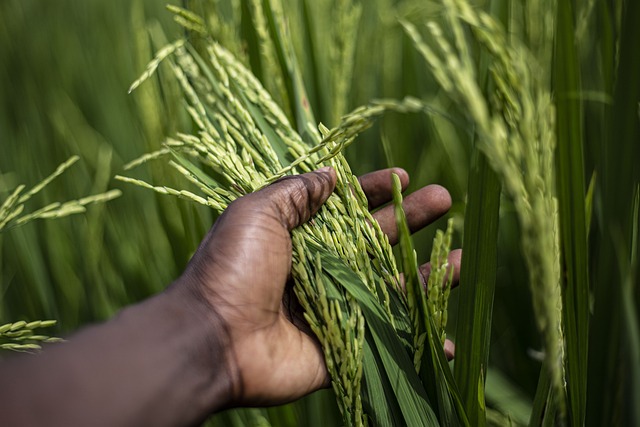
How is Organic Brown Rice Grown?
Rice cultivation begins with the preparation of paddy fields, which are flooded to create a suitable environment for the rice plants. Rice seeds are then sown or transplanted into these fields. Brown rice is typically harvested from these fields, retaining its outer bran layer, which is removed in the production of white rice.
The Organic Way to Grow Organic Brown Rice
Organic brown rice is cultivated without synthetic fertilizers, pesticides, or genetically modified organisms (GMOs). Instead, organic farmers rely on natural techniques to enhance soil fertility and manage pests such as:
- Crop Rotation: Alternating rice with other crops to maintain soil fertility and reduce pest buildup.
- Composting: Using organic matter like compost to nourish the soil.
- Biological Pest Control: Introducing beneficial insects or natural predators to manage harmful pests.
- Manual Weeding: Removing weeds by hand or with tools rather than using chemical herbicides.
These practices ensure that the rice is free from harmful chemicals, making it a healthier choice for consumers and a more sustainable option for the environment.
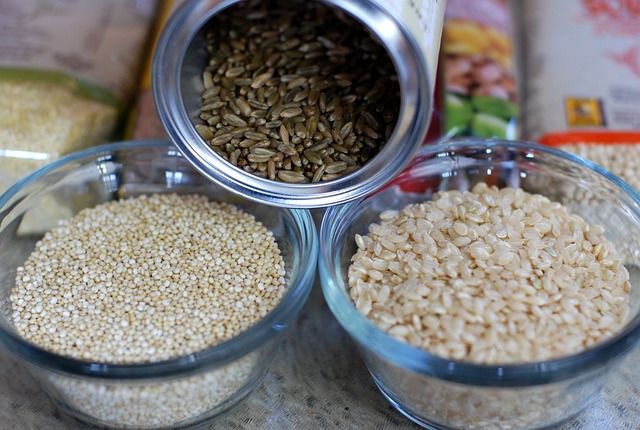
Exploring the Varieties of Organic Brown Rice
Organic brown rice comes in several varieties, each with unique characteristics:
- Long-Grain Brown Rice: Known for its slender grains and light, fluffy texture, ideal for pilafs and stir-fries.
- Medium-Grain Brown Rice: Slightly shorter and plumper grains that are more tender and chewy, perfect for risottos and salads.
- Short-Grain Brown Rice: Almost round grains that become sticky when cooked, commonly used in sushi and rice puddings.
- Basmati Brown Rice: Aromatic long-grain rice with a distinct fragrance and flavor, often used in Indian cuisine.
- Jasmine Brown Rice: Another aromatic variety, known for its floral scent and soft, slightly sticky texture.
Why Choose Organic Brown Rice Over White Rice?
- Nutrient-Rich: Brown rice retains the bran and germ, providing higher levels of fiber, vitamins, and minerals.
- Lower Glycemic Index: It has a lower glycemic index than white rice, helping to regulate blood sugar levels.
- Health Benefits: Consumption of brown rice is associated with a reduced risk of chronic diseases like diabetes, heart disease, and obesity.
- Flavor and Texture: Brown rice has a nutty flavor and chewy texture that many people find more satisfying.
Why Organic Brown Rice is a Sustainable Choice for Your Diet
- Environmental Impact: Organic farming practices reduce pollution, conserve water, and improve soil health.
- Biodiversity: Organic farms often support greater biodiversity, benefiting the ecosystem.
- Support for Farmers: Choosing organic products supports farmers who use sustainable practices.
- Healthier Ecosystem: Reduced use of synthetic chemicals helps protect the health of local communities and wildlife.
Organic brown rice is not only a nutritious and delicious addition to your diet but also a choice that supports sustainable agriculture and a healthier planet. Whether you enjoy it in a simple stir-fry or as part of a more elaborate dish, you can feel good about incorporating this wholesome grain into your meals.

Health Benefits of Organic Brown Rice for Type 2 Diabetes
Organic brown rice is a nutritious whole grain that can be especially beneficial for individuals with type 2 diabetes. Here are some key health benefits:
Low Glycemic Index
Organic brown rice has a lower glycemic index (GI) compared to white rice. This means it causes a slower, more gradual increase in blood sugar levels after consumption. Foods with a low GI are beneficial for managing blood sugar levels, making organic brown rice a better option for people with type 2 diabetes.
High Fiber Content
The high fiber content in organic brown rice helps regulate blood sugar levels by slowing down the absorption of sugar into the bloodstream. Dietary fiber also aids in improving insulin sensitivity, which is crucial for diabetes management. Additionally, fiber helps in maintaining digestive health and preventing constipation.
Rich in Magnesium
Organic brown rice is a good source of magnesium, a mineral that plays a vital role in regulating blood sugar and insulin metabolism. Studies have shown that adequate magnesium intake can help improve insulin sensitivity and reduce the risk of type 2 diabetes.
Nutrient-Dense
Organic brown rice retains the bran and germ layers, which are rich in essential nutrients like vitamins B1 (thiamine), B3 (niacin), B6, manganese, phosphorus, and antioxidants. These nutrients are important for overall health and can help in managing diabetes-related complications.
Weight Management
Maintaining a healthy weight is crucial for managing type 2 diabetes. Organic brown rice is a whole grain that can help with weight management due to its high fiber content, which promotes a feeling of fullness and reduces overall calorie intake. Managing weight effectively can improve blood sugar control and reduce the risk of diabetes complications.
Antioxidant Properties
The antioxidants present in organic brown rice, such as phenolic compounds and flavonoids, help reduce oxidative stress and inflammation in the body. Chronic inflammation is linked to insulin resistance and the progression of type 2 diabetes. Consuming antioxidant-rich foods can support overall health and diabetes management.
The Major Regions for Brown Rice Production
1. Asia: The Heartland of Brown Rice Cultivation
Asia, particularly South and Southeast Asia, is the leading region for brown rice production. Countries like India, China, Thailand, and Vietnam are among the top producers. The traditional methods and favorable climate conditions make these regions ideal for rice farming.
2. Key Regions and Their Production Methods
India
- Region: West Bengal, Punjab, Uttar Pradesh
- Production Method: India primarily uses the SRI (System of Rice Intensification) method, which emphasizes planting younger seedlings, wider spacing, and intermittent irrigation. This method has been successful in increasing yield and reducing water usage.
- Success Story: In Tamil Nadu, the adoption of SRI has led to significant increases in brown rice yields, with some farmers reporting up to a 50% increase in production. This method has also reduced water consumption by 30-40%.
China
- Region: Jiangsu, Hunan, Sichuan
- Production Method: China employs a mix of traditional and modern techniques, including hybrid rice varieties and integrated pest management (IPM). The focus is on achieving higher productivity while maintaining environmental sustainability.
- Success Story: In Hunan Province, the introduction of high-yield hybrid brown rice varieties has significantly boosted production. Farmers have seen increased income due to higher yields and better market prices for organic brown rice.
Thailand
- Region: Central Plains, Northeast Thailand
- Production Method: Thai farmers use traditional methods combined with organic farming practices. They focus on maintaining soil fertility through crop rotation and organic fertilizers.
- Success Story: In the Yasothon Province, organic brown rice farming has gained popularity. Farmers have formed cooperatives to share resources and market their products, leading to better income and sustainable farming practices.
Vietnam
- Region: Mekong Delta, Red River Delta
- Production Method: Vietnam uses a combination of SRI and traditional farming methods. The emphasis is on reducing chemical inputs and promoting organic farming.
- Success Story: The Mekong Delta has seen a surge in organic brown rice production. Farmers have adopted eco-friendly practices, resulting in healthier crops and better market access for their organic produce.
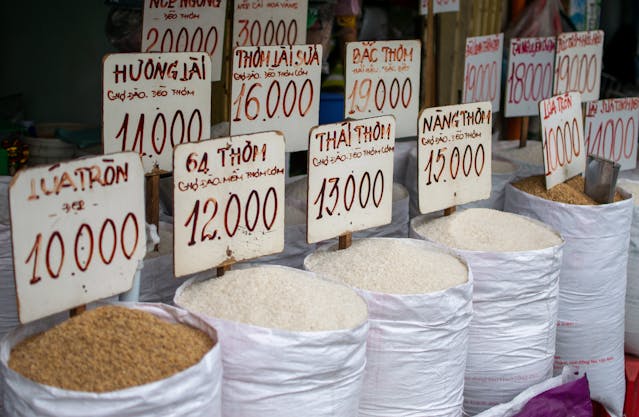
Brown Rice Farmers’ Markets and Distribution
India
- Farmers’ Market: Delhi Organic Farmers’ Market, Mumbai Farmers’ Market
- Distribution: Farmers’ markets, local cooperatives, online platforms like BigBasket and Amazon India.
China
- Farmers’ Market: Beijing Organic Farmers’ Market, Shanghai Green & Safe Farmers’ Market
- Distribution: Supermarkets, online platforms like Alibaba and JD.com, specialty organic stores.
Thailand
- Farmers’ Market: Bangkok Farmers’ Market, Chiang Mai Organic Farmers’ Market
- Distribution: Local markets, organic food stores, online platforms.
Vietnam
- Farmers’ Market: Hanoi Organic Farmers’ Market, Ho Chi Minh City Green Farmers’ Market
- Distribution: Local cooperatives, supermarkets, online platforms.
The regions mentioned above are leading the way in brown rice production, each with their unique methods and success stories. The shift towards organic farming practices and sustainable methods has not only improved yields but also enhanced the quality of life for farmers. Farmers’ markets and online platforms have played a crucial role in connecting these producers with consumers, ensuring that organic brown rice reaches a wider audience. This movement towards organic and sustainable farming is crucial for the environment and provides healthier options for consumers worldwide.


